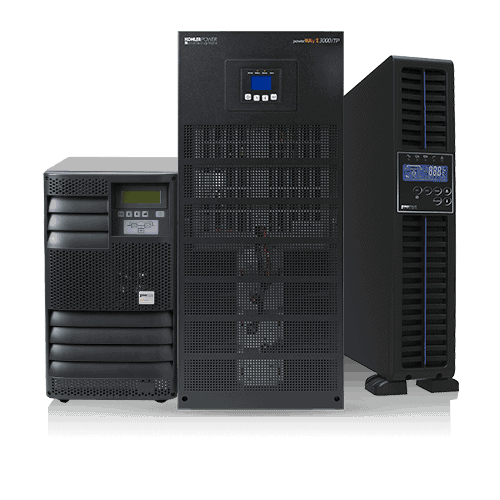When specifying a UPS, you would no doubt choose a capacity that would be adequate for the data centre or IT room that it’s intended to support, with provision for growth and/or redundancy as appropriate.
However, how confident are you that you’ve sized the load correctly, and that you’ve allowed sufficiently for its characteristics as well as its size? Below, we look at the issues to consider.
For an initial approximation of load size, simply collate information from labels on all the equipment comprising the proposed UPS’s load. This should include supply voltage and frequency, number of phases, load current, power factor and power consumption. The UPS Handbook Fifth Edition, available from the KOHLER Uninterruptible Power website, has a template for collecting these load details on page 209.
The number of phases needs some care; while a three-phase UPS can supply both single- and three-phase loads, a single-phase UPS can only support single-phase loads.
Power factor ratings create further challenges. UPS loads usually draw current that’s out of phase with the voltage, which is reflected by a power factor of less than unity. Traditionally, these loads have presented a lagging (inductive) power factor, but modern switched mode power supplies – as typically found within blade servers – have shifted this towards unity, and sometimes into a leading (capacitive) power factor. This can lead to significant derating on legacy UPS systems, while transformerless topologies are far less affected.
How can computers cause phrase imbalance?
If single-phase computers with nonlinear load characteristics are connected into a three-phase network, they may create a phase current imbalance, causing current flow in the neutral conductor. Such currents, as well as high peak line currents can cause feeder and transformer overloading, as well as voltage distortion and common-mode distortion. The IET Wiring Regulations 18th Edition has advice on this topic.
In any case, it is good practice to distribute single-phase loads across the UPS’s three-phase output as evenly as possible. This allows the UPS rating to be fully utilised, while also presenting a balanced load to the mains supply or generator if the UPS is bypassed. Most modern UPSs have independently-regulated phase voltages and do not require careful phase balancing, however even these systems should not be subjected to more than 33% of their total rating on any single-phase.
Loads that require special consideration for UPS
Although UPS equipment is generally resilient, there are problem loads that require special consideration. These include:
- blade servers
- fluorescent/gas discharge lighting
- motors and compressors
- air conditioning equipment
- laser printers
- dimmable lighting systems
These items can draw high or pulsed currents during normal operation or start-up. This may cause UPS overload or unintended operation, during startup in particular, creating intermittent alarms or possible transfer between inverter and static bypass. This is in addition to the previously-mentioned blade server issues.
For example, high current devices such as laser printers and motors, if not fitted with soft-start circuits, can impose high inrush currents on start-up, possibly reaching 15 – 20 times the nominal RMS value. UPS systems intended to support such loads should be oversized accordingly.
UPS site survey
While the ‘label survey’ provides a useful approximation of load size, it’s essential to use a professional site survey as provided by KUP for more accurate, realistic results. Using measuring and monitoring equipment, its recordings will reveal real rather than potential loads, including how the load varies over time.
Last, but most certainly not least, you should plan for future expansion. And this is just one area where using modular systems can pay enormous dividends. Firstly, provided you allocate sufficient racking space, you don’t even need to buy extra UPS capacity just for future proofing. When a need does arise, you can immediately plug in another UPS module, without ever taking the UPS offline.
Secondly, modularity lets you increase capacity incrementally. You don’t have to invest in large excess capacity, while the modules that are installed are more fully-loaded, and therefore kept away from inefficient operating regions.





